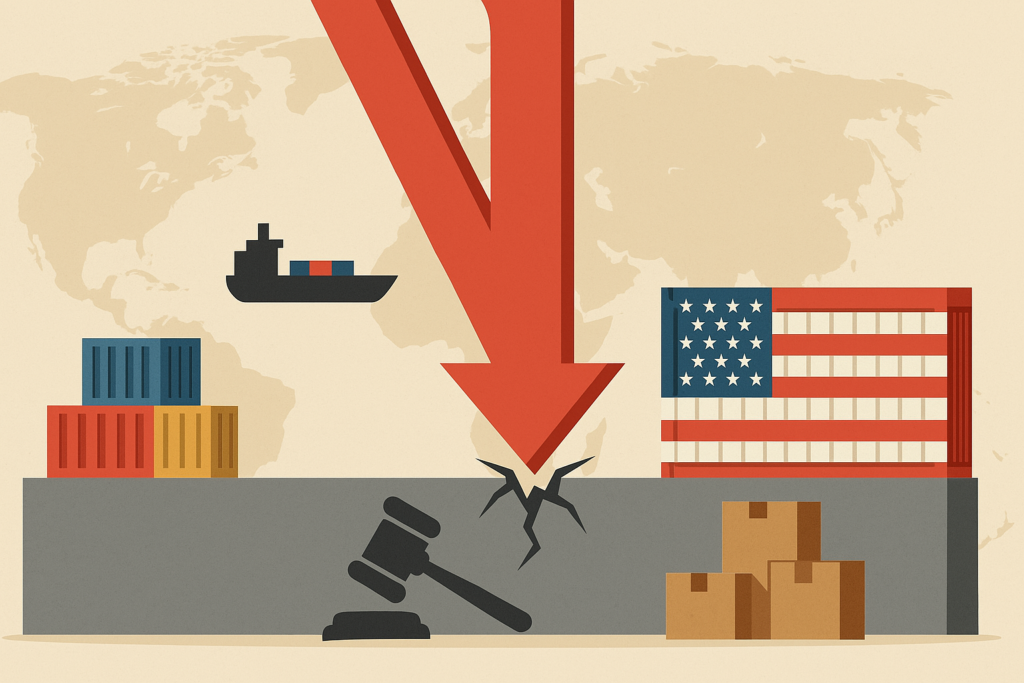
With the recent shift in U.S. trade policy—particularly the announcement of sweeping new tariffs—many clients are understandably concerned about the potential impact on their investments and the broader economy. This article aims to provide a clear, factual overview of tariffs, how they work, and what the latest changes may mean for markets going forward.
What Is a Tariff?
A tariff is a tax levied by a government on imported goods and services. Usually calculated as a percentage of the item’s value, tariffs serve several key purposes:
-Revenue Generation – Historically, tariffs have been a source of government income.
-Protection of Domestic Industries – By raising the cost of foreign goods, tariffs can make local alternatives more competitive, encouraging consumers to buy American-made products.
-Trade Negotiation Tool – Tariffs can be used to pressure other nations during trade negotiations or respond to unfair trade practices.
For a deeper dive, the Council on Foreign Relations offers a comprehensive explanation of tariffs and their applications. [1]
Recent Tariff Announcements
On April 2, 2025, President Donald Trump unveiled new tariff measures under what’s been dubbed the “Liberation Day” trade strategy:
- A baseline 10% tariff on all imported goods, effective April 5, 2025.
- A 104% tariff on goods imported from China, effective April 9, 2025. [2]
These measures aim to reduce trade imbalances and encourage domestic manufacturing.
Market Reactions and Economic Implications
Markets reacted swiftly:
- The S&P 500 and Nasdaq Composite dropped notably in response to the announcement. [2]
- The bond market saw a sharp sell-off, with U.S. Treasury yields climbing as inflation concerns resurfaced. [3]
Short-Term Outlook: Expect Volatility
Markets dislike uncertainty, and these sudden policy changes are a prime example. We expect heightened volatility soon as businesses and investors adjust to the new trade environment.
However, there’s also a silver lining: now that tariff rates are defined, companies and investors can start making informed decisions and adapt to the landscape. This is a reminder for long-term investors to focus on fundamentals and avoid reactive decisions.
A Wide Range of Outcomes
In many ways, the environment we’re in reflects what we’ve been saying for over a year: the range of outcomes is extremely wide—and growing. While “soft” data like business surveys have weakened, “hard” data—such as employment and production—remains surprisingly resilient.
It’s worth noting that the recent market sell-off wasn’t driven by a collapse in demand or supply—it was largely fear-based. The uncertainty is vast: we don’t know where final tariff levels will land, how long they’ll remain, how global supply chains will be affected, or even what the ultimate objective is. The policy feels scattershot—impacting both allies and rivals.
If the goal is to bring manufacturing back to the U.S., tariffs would likely need to be long-term, which could drive inflation due to higher domestic costs. If the goal is to negotiate better trade deals, tariffs may be short-lived and ultimately disinflationary. Either way, it becomes a balancing act between tariff rate and duration.
In the short term, tariffs could suppress demand (disinflationary), while simultaneously increasing prices (inflationary). The market doesn’t yet know which force will dominate. Additionally, with policy direction prone to change with a single tweet, volatility remains elevated.
Corporate and Consumer Impact
For corporations, uncertainty is often more damaging than the tariffs themselves. Many have slowed capital expenditures and hiring. Year-to-date layoffs are at multi-year highs, and that pressure is filtering through the supply chain, affecting businesses of all sizes.
On the consumer side, February’s personal savings rate hit a two-year low. Job switch rates and wage gains for those changing roles have also plateaued—an early sign that consumers are growing more cautious. Furthermore, household equity exposure near record highs, any significant market downturn could reduce spending further as paper losses become real.
That decrease in consumer demand could cause manufacturers to scale back production, tightening margins and leading to further wage pressure, particularly for businesses with high fixed costs.
Final Thoughts
While the full impact of these new tariffs remains to be seen, one thing is clear: uncertainty will continue to drive market behavior in the near term. Staying focused on long-term fundamentals and maintaining a well-diversified portfolio remains the most effective way to navigate these turbulent times.
Sources
1. Council on Foreign Relations. What Are Tariffs? – https://www.cfr.org/backgrounder/what-are-tariffs
2. Business Insider. Trump’s tariffs are officially here. (April 2025) – https://www.businessinsider.com/trump-tariffs-are-here-2025-4
3. Reuters. Global markets react to bond market selloff. (April 9, 2025) – https://www.reuters.com/markets/rates-bonds/global-markets-bonds-update-1-quotes-2025-04-09